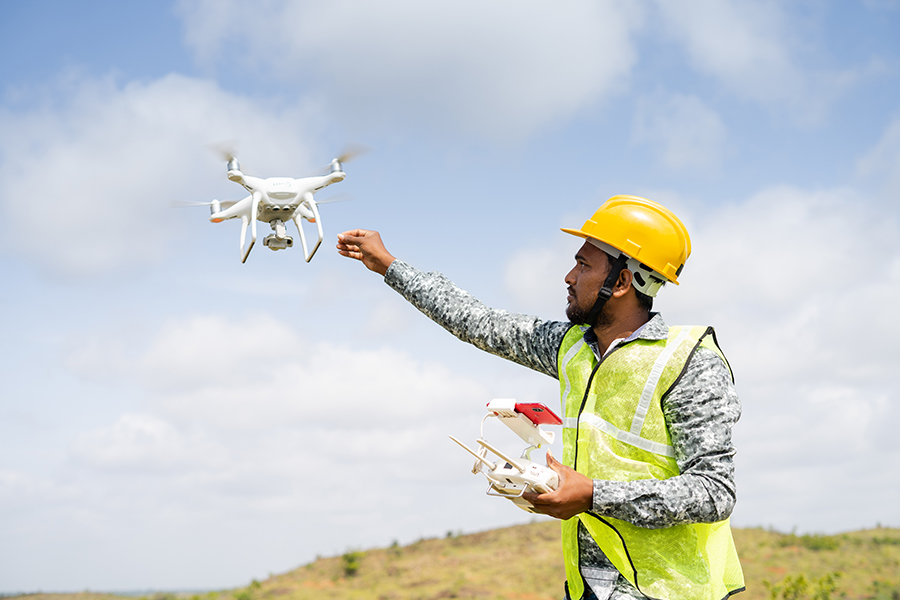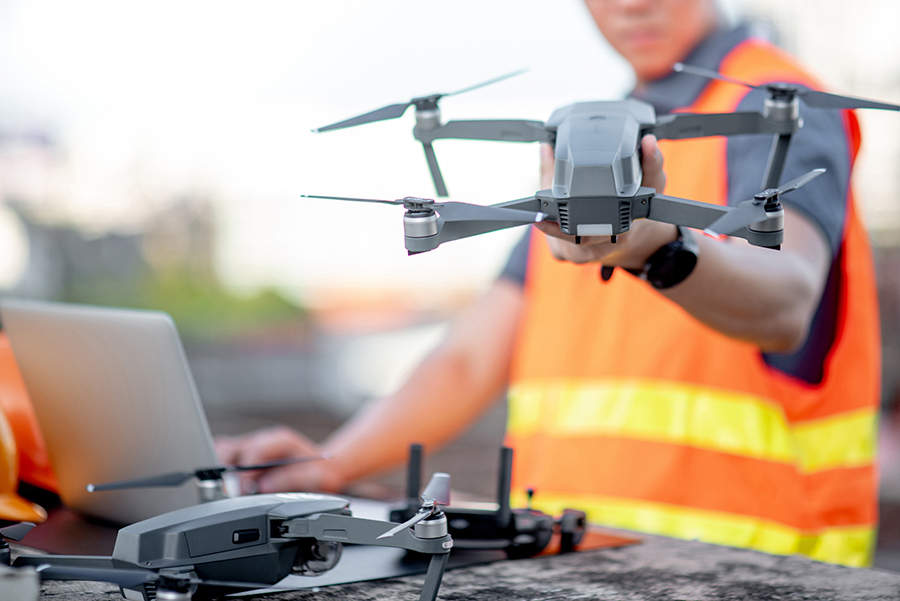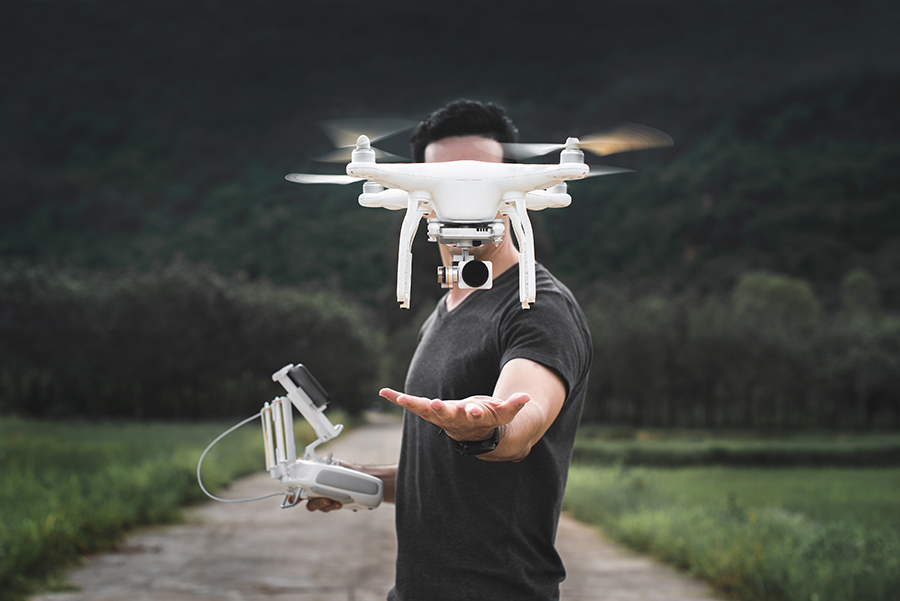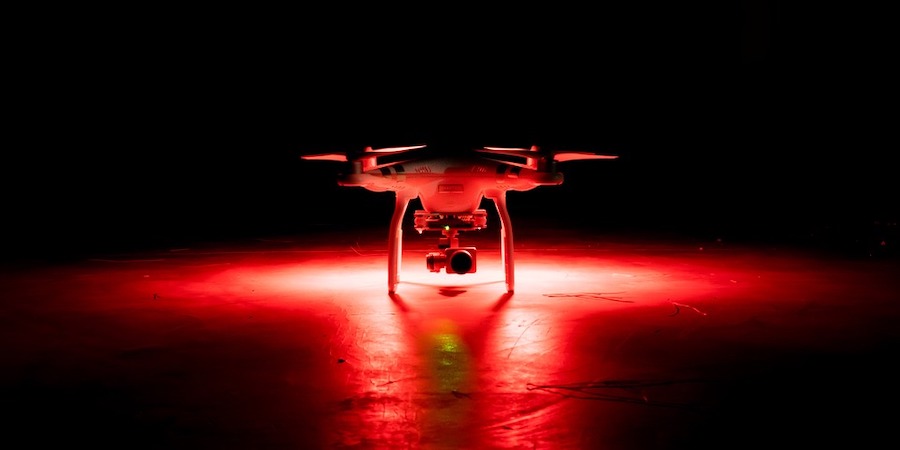The coverage, type of operations, drone model, and the qualifications of the drone pilot can all be critical elements in determining the cost of drone insurance. There are also factors beyond the control of the drone operator, such as cyclical financial trends.
Drone insurance is a tool that is generally recommended for drone pilots, especially for those who conduct commercial operations. Much like any other insurance product, drone insurance policies can vary greatly. Here are the factors that are taken into consideration when setting the price for drone insurance.
Type of insurance
When getting drone insurance, the first question you need to ask is – what type of insurance do you need? There are generally only two types to choose from, although there may be more specialized products available for more specific circumstances.
Drone hull insurance covers the costs of repair or replacement of the drone if it gets into an accident. These are relatively inexpensive, although the actual premium cost will still vary based on the drone’s market price.
There are also drone hull policies that can cover the cost of any payload. This can be crucial in applications that involve high-end payloads such as thermal cameras or multispectral sensors.
The second type of insurance you can get for your drone is liability insurance. This is a fairly common insurance product and applies to drones in the same way that it applies to any other industry. Liability insurance will cover the costs of any damage to another person’s property or injury to another person that may result from an accident involving your drone.
The cost of liability insurance can vary widely based on several factors. However, it is generally more expensive than drone hull insurance. It is also arguably more important, especially for commercial operations. Securing liability insurance has become a standard in the commercial drone industry.
Coverage
As with any other insurance product, more extensive coverage will drive up the premium costs of your drone insurance. Coverage in this context can mean both a higher financial coverage or coverage for more circumstances.
The cost of drone hull insurance largely depends on the cost of your hardware. As one would expect, a more expensive set of drone and payload equipment will cost more to insure. The age of your hardware will also be a consideration, as the depreciated cost of the equipment should be the basis of insurance premiums.
Most drone insurance plans will not cover cosmetic damage, damage to parts that are meant to be replaced (such as propellers or batteries), and normal wear and tear. However, you can get a plan that covers accidental damage and loss, including water damage. This could be handy in case of a drone fly away, or if the drone crashes in a spot where it can no longer be recovered. Theft of the drone can also be covered. Naturally, adding on these circumstances to a plan will increase its premium costs.
The coverage of liability insurance is defined with a dollar value. This pertains to the amount that the insurance company will cover in case a drone accident causes damage or injury. The coverage for liability can reach up to several million depending on the nature of drone operations. You can typically dictate your preferred coverage for liability insurance, but commercial pilots do this in the context of the type of operations they will be conducting.
Nature of operations

If you’re using your drone for commercial operations, the type of industry you’re working in will play a significant role in determining premium costs. As with any other insurance product, a riskier profile will require higher premiums.
Low-risk operations do not involve flying near critical infrastructure or anything that will increase the risks of drone flight. Typical examples include aerial coverage for events, golf course management, precision agriculture surveys, land surveys, and perimeter surveillance.
If your operation involves flying near power lines or communications towers, the risk of signal interference may increase insurance premiums. Flying near critical infrastructure such as oil and gas lines, luxury houses, and buildings can also require getting liability insurance with high coverage.
Insurance and high-risk operations pretty much go hand-in-hand. You will likely not get a contract to inspect power lines if you don’t have a million-dollar liability insurance policy.
Pilot qualifications and history
There is an inherently high level of risk associated with drone flight, which somewhat drives up insurance costs. Fortunately, there are also ways to de-risk drone operations and hopefully, reduce insurance premiums.
The first instrument of de-risking is the profile of the pilot. A pilot with experience and demonstrable flight skills will be considered low-risk compared to one who is still quite new. Specific training relevant to the actual operations or industry can also help. For instance, there are specialty drone flight courses that cater to power line inspection or real estate photography.
Commercial drone pilots are encouraged to maintain a record of their previous drone operations and total flight hours. This documentation will come in handy when applying for drone insurance. If there is documentary evidence that the pilot has flown in previous operations before without any incident, you should be able to get insurance at friendlier terms.
Aircraft capabilities and records

There are also ways to de-risk a drone operation based on the special safety capabilities of the drone. At the most basic level, the drone should have a Return to Home function and is capable of GPS stabilization. This should already help avoid instances of drone flyaways.
If you’re flying at night, then your drone should be outfitted with the appropriate strobe lights. Drones with obstacle avoidance sensors are also less likely to get into an accident. Equipping a drone with a GPS tracker or parachute can help avoid accidents under specific circumstances. It’s worth discussing these measures with your insurance provider, just in case premiums can be reduced.
More importantly, you can get lower premiums if you can prove that the drone is in tip-top condition based on maintenance and pre-flight inspection records. It helps if the drone is regularly calibrated, the parts are replaced before they cause issues, and repairs are done when needed.
Maintaining good maintenance records also speaks well of the habits and safety awareness of the drone operator or owner. Fortunately, there are now many flight program apps that can make documentation a lot easier than having to write records down on an actual piece of paper.
Location
Insurance rates can vary based on the state where you conduct your business. This is just one of many reasons why certain industries thrive in very specific locations. Within a single state, there may also be slight variations based on whether you’re flying in controlled airspace, near critical infrastructure, or whether you’re in an urban or rural area.
Market conditions
Drone insurance is still a financial instrument that is vulnerable to market conditions. Just as with other industries, insurance can be influenced by several external factors. In turn, you may be able to get worse or better premiums based on the prevailing market conditions when you signed up for the plan. These factors are mostly out of your control – supply and demand for insurance, the dollar reserve of the insurer, or even a recent catastrophic event.
Now that you know how these circumstances can affect insurance premium prices, it would be a good idea to shop around across different insurance providers. Make sure to get a plan that works for you and that you are getting it at the best prices. It’s also a good idea to check for feedback from customers of these insurance providers. You will want to know how easy it is to get any claims from them, or if the provider will make claims deliberately more difficult.
Is drone insurance required by the FAA?

With all this talk of drone insurance, you would be inclined to think that drone pilots get it because it is a legal requirement. It actually is not – the FAA makes no mention of insurance in the Part 107 rules for commercial drone operations.
Legal requirements aside, having drone insurance has become an industry standard. It makes good business sense, too, for both the service provider and the client. Having drone insurance can protect your business from the financial fallout that can result from a bad drone accident. It also gives the impression to your clients that you are concerned about safety, liability, and business continuity.
Should recreational drone pilots get insurance?
For commercial drone pilots, there is hardly any argument on whether getting drone insurance is a good or bad idea. The same cannot be said about recreational drone flights. After all, drone insurance can get quite expensive and you will not be getting that cost back if you’re just flying for fun.
If you’re flying a drone that costs more than $1000, then getting drone hull insurance on it might still be a good idea. Drone insurance is expensive, but so is having to replace a high-end drone if it gets damaged. If you’re flying an inexpensive entry-level drone, then drone insurance is an optional luxury.
Since liability insurance is even more expensive, it is also less practical for recreational drone flights. However, this also means that recreational drone pilots should be aware of their limits and that they should avoid flying in high-risk situations. If you don’t have liability insurance, you should try to steer clear of any critical infrastructure or other aircraft and avoid flying over people or moving vehicles.
Final thoughts
While the FAA still does not legally compel drone pilots to get insurance for any type of drone operations, it has now become a standard for professionals. It simply makes sense. For such a high-risk activity as drone flight, having insurance can give you much more peace of mind that you’re not going to lose your drone or your entire business because of an accident.
It is also understandable how some drone professionals can be penny-pinching when it comes to insurance. There are lots of factors that come into play when determining the price of an insurance policy. A stellar safety record is a massive help in reducing premium prices, as is engaging only in low-risk activities.



